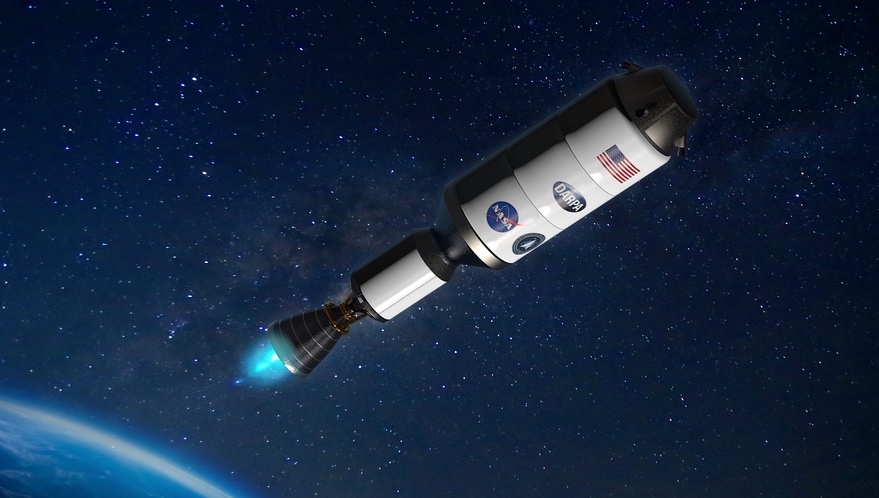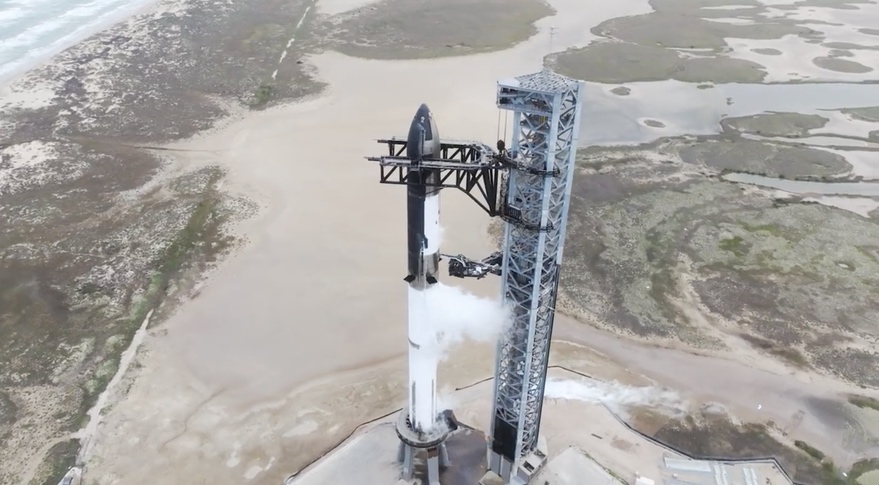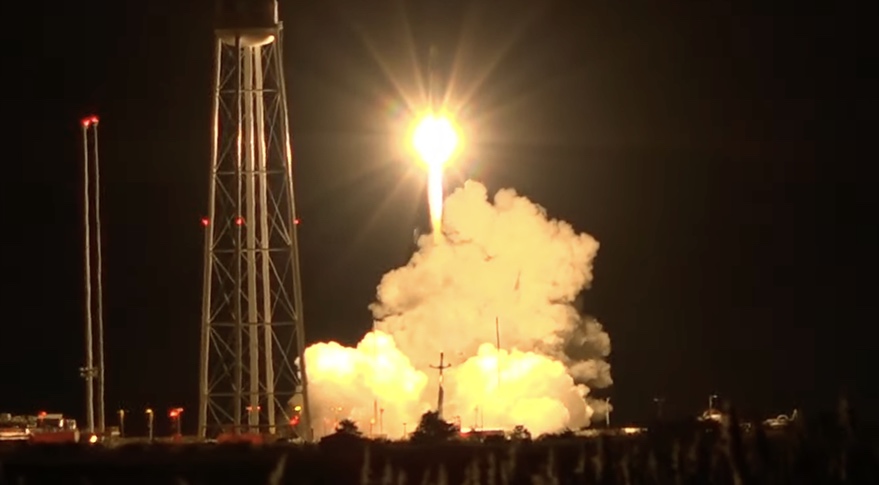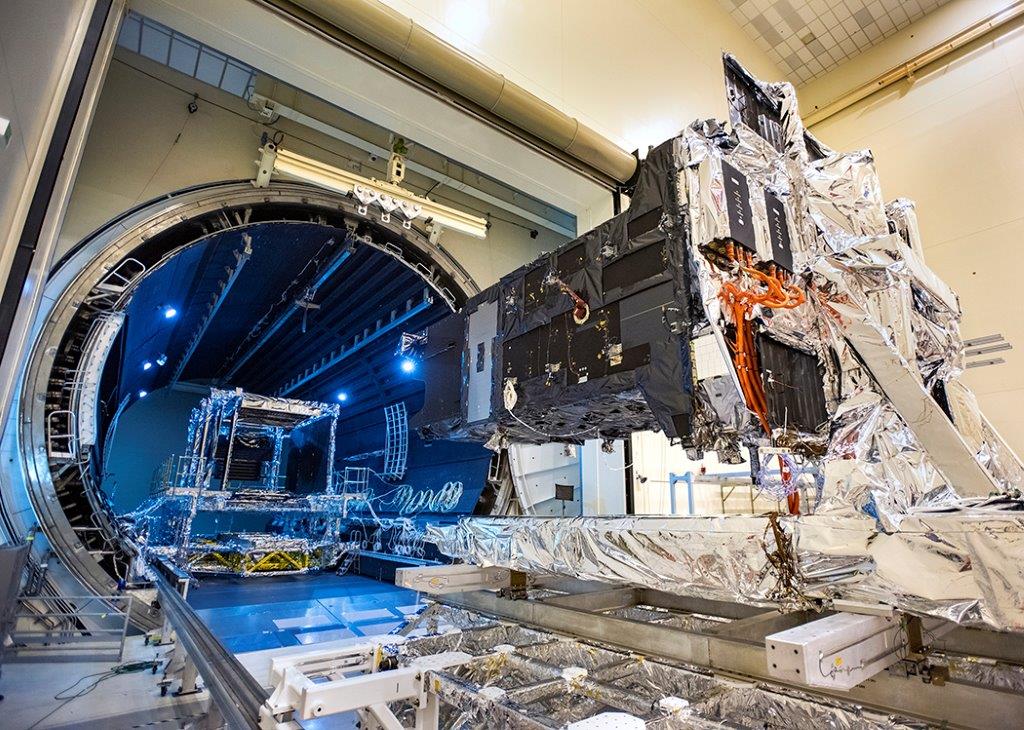NASA and DARPA to partner on nuclear thermal propulsion demonstration
Original Publication Date: 2023-01-24 18:04

NASA, Defense Advanced Research Projects Agency to cooperate on nuclear propulsion. Nuclear thermal propulsion offers more efficient propulsion than conventional chemical rockets. NASA has embraced that technology as critical to future human missions to Mars. NASA administrator: "Our goal is to launch and demonstrate a successful nuclear thermal engine as soon as 2027"
Thales Alenia Space leading another ESA push to develop quantum comms
Original Publication Date: 2023-01-24 14:39

Thales Alenia Space has signed a contract to develop quantum technologies. The European satellite maker is leading a consortium called TeQuantS. TeQuantS aims to develop technologies needed to demonstrate quantum links from space. These links are intended to be more secure than conventional networks.
SpaceX completes Starship wet dress rehearsal
Original Publication Date: 2023-01-24 12:07

SpaceX conducted a fueling test of its full Starship launch vehicle Jan. 23. The test, called a wet dress rehearsal, simulates a countdown without firing the vehicle’s engines. The wet dress rehearsal was one of the final milestones for the vehicle before the company was ready to attempt orbital launch.
Rocket Lab launches first Electron from Virginia
Original Publication Date: 2023-01-25 00:53

Rocket Lab performed its long-awaited first Electron launch from Virginia Jan. 24. The Electron rocket lifted off from Launch Complex 2 at the Mid-Atlantic Regional Spaceport. Rocket Lab had been working for years to set a U.S. Launch site to support government and other customers.
Space Command: U.S. satellites ‘constrained’ by lack of mobility
Original Publication Date: 2023-01-24 22:47

Russian and Chinese satellites have maneuvered to get a closer look at U.S. Military satellites. U.S. Surveillance satellites are increasingly at a disadvantage because of their limited maneuverability. Not having freedom to maneuver is “constraining us in a significant way,” official says.
Space Force not buying large satellites for the foreseeable future
Original Publication Date: 2023-01-24 19:04

Frank Calvelli is assistant secretary of the Air Force for space acquisition and integration. Calvelli spoke at the National Security Space Association’s defense and intelligence conference. He said DoD should stop designing bespoke satellites buses and use commercial products. Calvelli spent more than three decades working on space programs at the National Reconnaissance Office.
Buckle up, it could get bumpy: The space economy’s vaunted resilience will be tested in 2023
Original Publication Date: 2023-01-24 17:06

Growth prospects for early-stage space firms in 2023 will be dampened by economic uncertainty. In the U.S., signs of economic growth are complicated by sky-high inflation and extremely low consumer confidence. Small and recent businesses in the space sector are more exposed to macroeconomic declines than more established companies.
NASASpaceFlight.com
India launches a new ocean monitoring satellite on Saturday morning. The PSLV rocket lifted off from the Satish Dhawan Space Centre at 11:56 local time (06:26 UTC) The mission, PSLV C54, will deliver the EOS-06 spacecraft into a low Earth orbit.
Commercial Archives
Rocket Lab's Electron small-satellite launcher successfully launched from New Zealand for the first time on Tuesday. Rocket Lab launched from NASA's Wallops Flight Facility in Virginia. The flight was the first Electron to lift off from Rocket Lab’s Launch Complex-2 (LC-2)
International Archives
Chang Zheng 2D rocket lifts 14 payloads to Sun-synchronous orbit. Launch comes at end of week that has also seen news about a reusable YF-100 engine. China has still been unable to make contact with its Zhurong Mars rover.
ISS Updates – Spaceflight101 – International Space Station

A veteran NASA spacewalker and an EVA rookie from Japan ended their week with nearly six hours of work outside the International Space Station. The restoration of the Station’s Mobile Servicing System started last year and continued in January to provide Canadarm2 with a new pair of grappling hands.
Featured – Spaceflight101

SpaceX Falcon 9 took to the skies over Florida’s Cape Canaveral Monday afternoon. The flight-proven Dragon spacecraft will deliver a critical delivery of science gear, supplies and maintenance hardware to the International Space Station. It is the first of at least six cargo ships inbound to the U.S. Segment of ISS this year.
News – Spaceflight101

Europe's Copernicus satellite fleet is gearing up for the arrival of its next addition on Wednesday. A Russian Rockot booster set to blast off from the Plesetsk Cosmodrome at 17:57 UTC with the Sentinel-3B multi-function satellite. Read more
Re-Entry: Long March 11 Rocket Body – Spaceflight101

The CZ-11 fourth stage used leftover propellant for a partial de-orbit maneuver, lowering its perigee to 120 Kilometers. It is reportedly built around a YF-50 main engine and in a nominal mission conducts the orbital circularization after the three CZ-11 stages finish their job.
NASA Measures Underground Water Flowing From Sierra to Central Valley

Researchers have been working for several years to combine GRACE data with observations from a GPS research network that measures how land surfaces rise and subside. In central California, those motions are largely caused by increases and decreases in underground water. Argus had previously used GPS to quantify the changing volume of water deep within the Sierra.
NASA’s Lunar Flashlight Team Assessing Spacecraft’s Propulsion System

Lunar Flashlight is the first interplanetary spacecraft to use a new kind of “green” propellant. The SmallSat will use a new laser reflectometer built with four near-infrared lasers to shine a light into the permanently shadowed craters at the lunar South Pole. Lunar Flashlight will employ an energy-efficient near-rectilinear halo orbit.
NASA Scientists and Satellites Make Sense of Earth’s Subtle Motions

JPL scientists are mapping where the Hayward Fault is creeping to better understand how much of it is likely to slip in the next large earthquake. Creeping faults are less likely to produce large earthquakes because the motion relieves much of the stress. JPL’s Zhen Liu is using InSAR data to study a different kind of motion in the earthquake-prone Pacific Northwest.
NASA’s TESS Discovers Planetary System’s Second Earth-Size World

Scientists have identified an Earth-size world, called TOI 700 e, orbiting within the habitable zone of its star. The world is 95% Earth’s size and likely rocky. Astronomers previously discovered three planets in this system, called TOi 700 b, c, and d.
NASA Wants You to Help Study Planets Around Other Stars

Exoplanet Watch is a new NASA program that lets anyone look for exoplanets. Participants can use their own telescopes to detect planets outside our solar system. They can also use data from other telescopes using a computer or smartphone. Exoplanet Watch began in 2018 under NASA’s Universe of Learning program.
NASA Space Missions Pinpoint Sources of CO2 Emissions on Earth

OCO-3 could be used more extensively in quantifying CO2 point-source emissions in the future. OCO-3 can serve as a “pathfinder” for next-generation satellite missions. The instrument will operate alongside another greenhouse gas observer aboard the space station, the Earth Surface Mineral Dust Source Investigation.
Watch the Latest Water Satellite Unfold Itself in Space

The Surface Water and Ocean Topography (SWOT) satellite launched into Earth orbit on Friday, Dec. 16. The solar arrays fully deployed shortly after launch, taking about 10 minutes. The mission monitors and controls the satellite using telemetry data, but it also equipped spacecraft with four customized commercial cameras.
